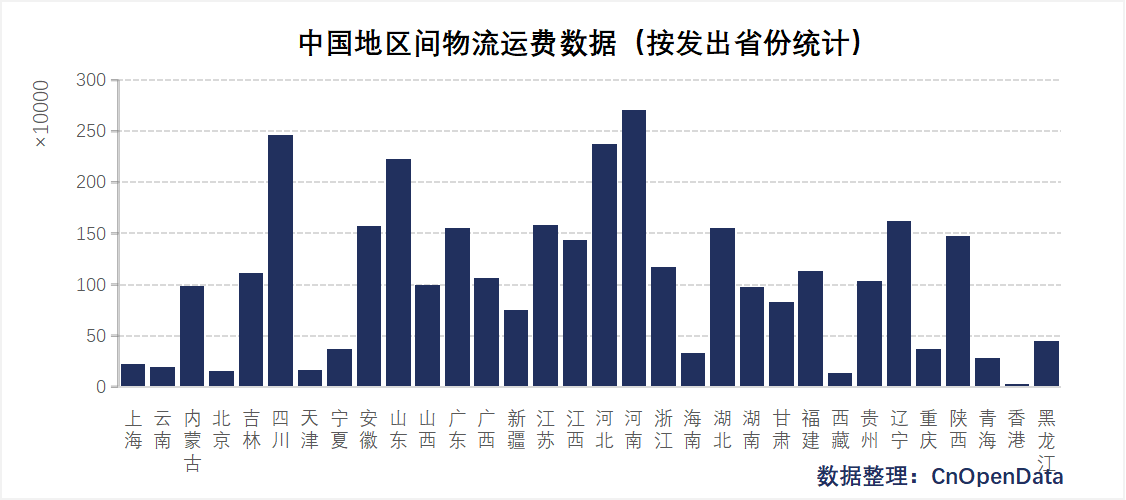The logistics industry, formed through the integration of transportation, warehousing, telecommunications, and other sectors, ensures the supply of social production and livelihood resources. It possesses dual attributes as a composite industry and a production-oriented service sector. Driven by the rapid expansion of information technology, e-commerce centered on online transactions has experienced explosive growth. E-commerce has emerged as a transformative economic form and modern circulation method that drives primary industries, upgrades secondary industries, and revolutionizes tertiary industries. While reshaping consumption patterns, e-commerce also promotes intensified collaboration, efficient integration, and agglomeration across logistics sectors. Conversely, logistics freight cost information between regions reflects the developmental status of e-commerce in different areas.
As a crucial component of China's modern service industry, modern logistics exerts comprehensive positive impacts on enhancing national economic operational quality, optimizing economic processes, adjusting economic structures, expanding domestic demand, and improving social welfare. Temporally, modern logistics eliminates delays and interruptions, reduces inventory overstock and supply shortages across industries, accelerates production/circulation rhythms, and optimizes economic processes. Spatially, it achieves effective coordination between production origins and consumption destinations, eliminates inefficient production, optimizes resource allocation and industrial structures, promotes efficient coordinated development of related industries, and enhances economic operational quality. Specifically, as a value-added activity in socioeconomic production, modern logistics demonstrates functional value through four major aspects: temporal efficiency, spatial efficiency, value-added service benefits, and integration benefits.
CnOpenData has compiled nationwide inter-regional logistics freight cost information, encompassing freight details of various transport routes between cities and from districts/counties to cities across logistics companies. This dataset also includes corporate profiles of logistics providers, providing robust support for related research.
Data Scale

Time Coverage
Monthly updates starting from June 2024
Field Description
Sample Data
城市间物流运费数据
区县至城市物流运费数据
Update Frequency
Monthly updates
